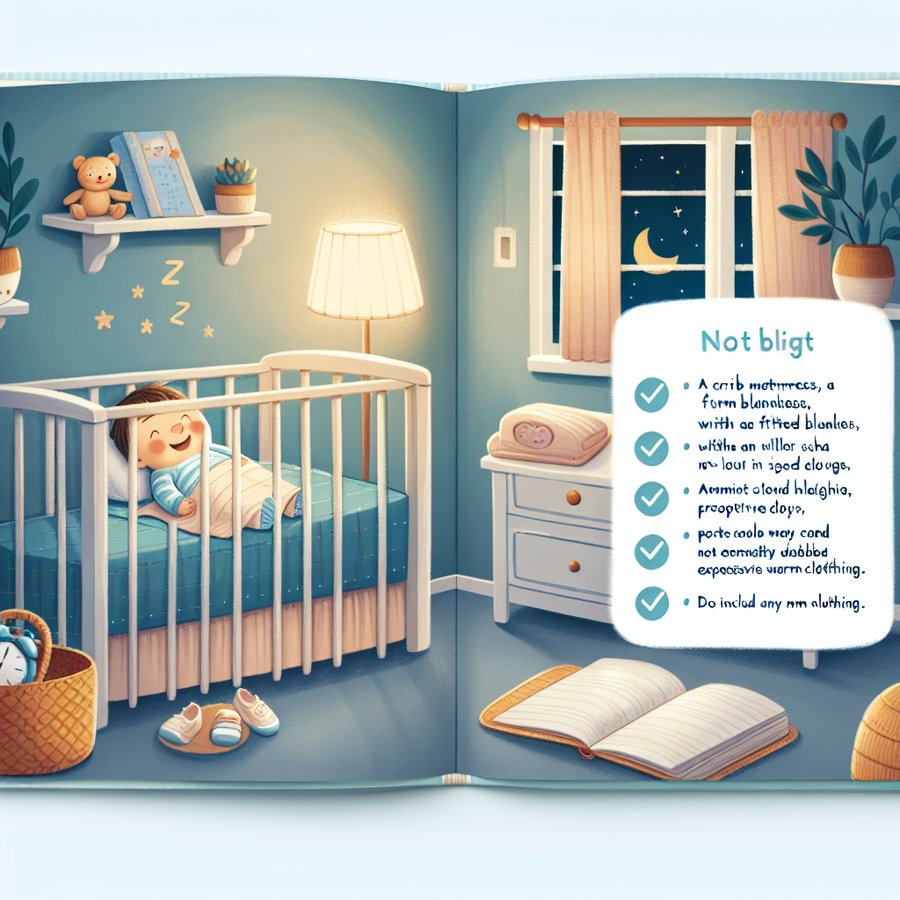Understanding and implementing SIDS Prevention for Newborn to 3-Months-Old is crucial for new parents and caregivers. Sudden Infant Death Syndrome (SIDS) is the unexplained death, usually during sleep, of a seemingly healthy baby less than a year old. This guide delves into key strategies to reduce the risk, ensuring your little one’s safety during these critical first months.
Creating a Safe Sleep Environment
One of the foundational steps in SIDS prevention is establishing a safe sleep environment for your baby. This means placing your baby on their back to sleep, on a firm mattress in a safety-approved crib free of pillows, blankets, bumpers, and toys. By adhering to this sleep positioning, you significantly lower the risk of SIDS.
In addition to proper sleep positioning, room-sharing without bed-sharing is recommended. Keeping the baby’s crib or bassinet in the same room where you sleep for the first six months to a year can reduce the risk of SIDS by up to 50%. Ensure the room is well-ventilated and maintain a comfortable temperature to avoid overheating. For more insights on creating a safe sleeping zone, explore our detailed guide on safe sleep practices.
SIDS Prevention for Newborn to 3-Months-Old: Key Practices
Adopting key practices is essential in the fight against SIDS. Breastfeeding, for instance, has been shown to reduce the risk. Aim to breastfeed your baby for at least six months. While breastfeeding may not always be possible for every family, doing so even for a short duration can be beneficial.
Another critical practice is ensuring your baby receives all recommended vaccinations. Vaccinations have been linked to a lower risk of SIDS, providing yet another compelling reason to follow the complete immunization schedule for babies. Additionally, keep the baby’s sleep area free from smoke exposure, as secondhand smoke increases the risk of SIDS.
Monitoring and Responsive Care
Responsive caregiving plays a significant role in SIDS prevention. This includes understanding and responding appropriately to your baby’s needs for feeding, comfort, and attention. Tools such as baby monitors can be invaluable for keeping an eye on your baby while they sleep. For recommendations, check out our selection of the best baby monitors.
It’s also critical to educate anyone who cares for your baby about SIDS prevention techniques, including babysitters and family members. Knowledge about proper sleep practices, the importance of a safe sleep environment, and the avoidance of risk factors should be widespread. Comprehensive caregiver understanding ensures consistent care, reducing the risk of SIDS.
Additional Preventive Measures
Additional preventive measures include avoiding overheating and ensuring your baby’s head remains uncovered during sleep. Dress your baby in light sleep clothing and use a sleep sack if necessary, avoiding blankets. Regular pediatric visits are essential for tracking your baby’s growth and development and discussing any concerns. Learn more about essential first-aid skills every parent should know to be prepared for any situation.
Moreover, consider using a pacifier when putting your baby to sleep, as research suggests it might reduce the risk of SIDS. However, if breastfeeding, wait until it is well-established before introducing a pacifier. For more personalized advice, consult your pediatrician, as they can provide guidance based on your baby’s unique health profile and needs.
Conclusion
SIDS Prevention for Newborn to 3-Months-Old is a multifaceted approach that requires awareness, education, and proactive measures. By creating a safe sleep environment, adhering to key practices like breastfeeding and vaccination, and employing monitoring and responsive caregiving, parents can significantly reduce the risk of SIDS. Remember, while SIDS is a rare occurrence, taking these preventive steps can offer peace of mind and contribute to your baby’s safety and well-being.
For further reading on baby safety and health, explore our comprehensive guides on topics ranging from Understanding Infant CPR to Preventing Choking Hazards. Empowering yourself with knowledge and implementing these guidelines can make a significant difference in your baby’s early months and beyond.













